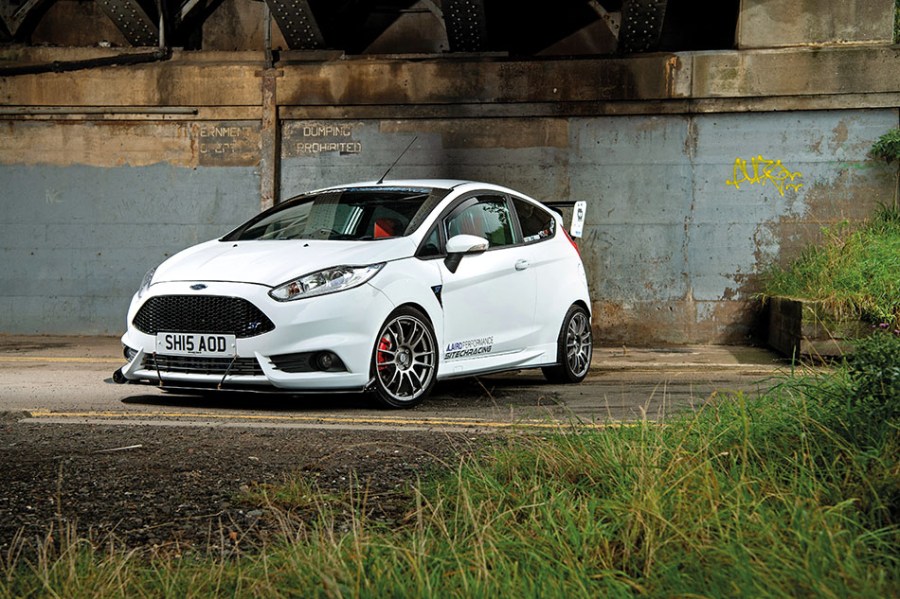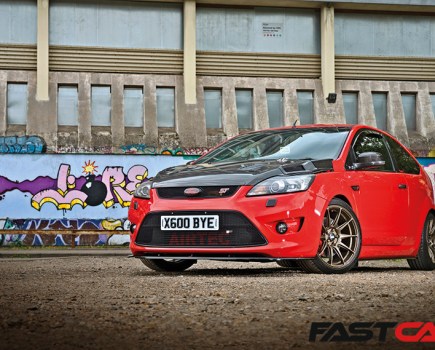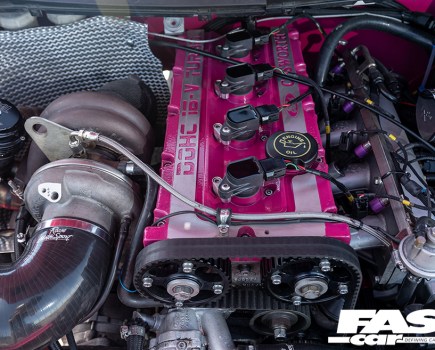It’s one of the most fun fast Fords ever made, and with so many performance modifications available, tuning the Ford Fiesta ST MK7 to suit your needs is easy.
The Ford Fiesta ST Mk7 will go down in history as one of the most tunable hot hatches ever. As standard it isn’t shy; even a factory example gives us more grunt (200PS/197bhp on overboost) than the quoted 180bhp that earns the car its ST180 nickname. Yet, ample as 200bhp in a fiery front-wheel-drive hatchback is, the Mk7 Fiesta’s excellent chassis means it’s just plain rude not exploit it by extracting more power through car tuning; more than double the factory power is within relatively easy reach, and we’ve recently seen cars producing over 500bhp!
Furthermore, the 1.6-litre EcoBoost has proven to be incredibly robust, and even at nearly double the factory power outputs the engine remains reliable, and compliant enough for everyday use.
More than just a punchy engine
Of course, the gem of an engine is only part of the Fiesta ST story. One of the main reasons tuners pushed so hard and so far with engine performance was because no matter how powerful the ST became, the chassis just lapped it up. The Mk7 Fiesta is widely praised for its fun and chuckable handling characteristics across the range, and the ST is understandably the best of the bunch. Yes, it can be a bit stiff and choppy, and the lack of a limited-slip differential can mean it’s entertaining trying to put all that power down, but these are easily remedied with bolt-on upgrades. The fundamentals of the chassis itself is sublime, and with the right tweaks in the right places the ST can be whatever you want it to be; anything from aired-out show-stopper to race-winning motorsport machine, and everything else in between.
And then we get to what is possibly the best bit about Ford Fiesta ST Mk7 tuning, it is supported by so many fantastic tuners and specialists that can cater for your every need. Many have been working closely with the ST since 2013, and the model has been their staple diet ever since, meaning they really know these cars inside-out.
By quizzing the experts, we’ve been able to pull together a picture of what works, what doesn’t, and what you should do to get your ST performing the way you want. In our Ford Fiesta ST Mk7 tuning guide we’ll go through it all, so sit back, relax, and get your credit card ready, because big power and even bigger performance is only a few clicks/calls away…
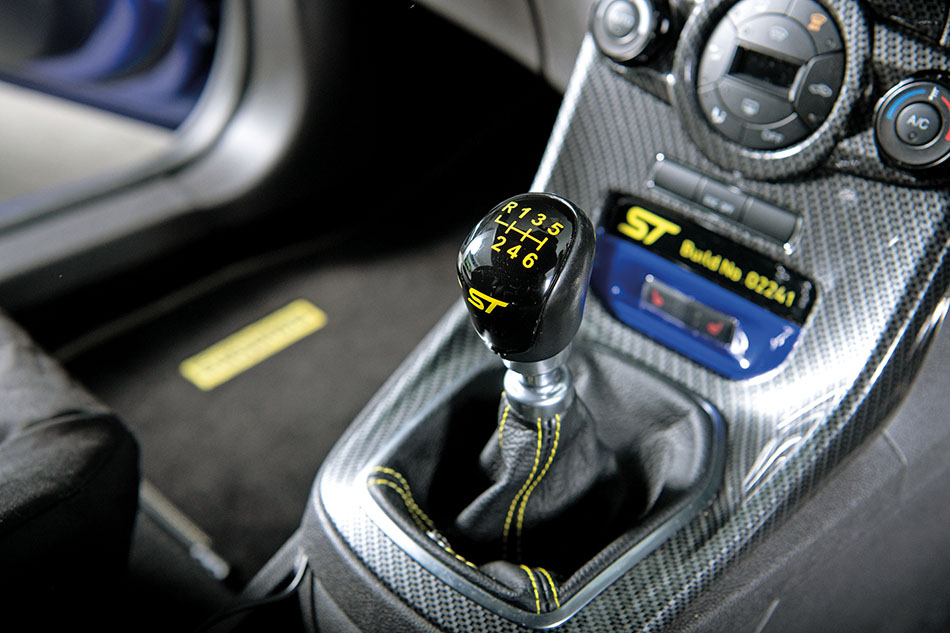
Ford Fiesta ST Mk7 tuning guide
Transmission
The Mk7 Fiesta ST’s Getrag B6 gearbox is incredibly tough and seems to be able to cope with power – and abuse – rather well. One thing that it does respond well to is a quickshifter kit, and there are a few to choose from. Prices start at around $/£50, and many even offer different reductions in throw.
We’ve seen plenty of big-power STs used hard and regularly on track without the stock gearbox so much as breaking a sweat. Even the OE clutch (which is an AP item) can handle the power and hard use without fuss. As the cars get older and the original units have covered more miles, though, you may need to start thinking about a clutch replacement.
If you’re a regular track-day fan, you might want to invest in a proper mechanical limited-slip diff, which is said to make a huge difference to the way an ST behaves. Which you choose will depend largely on how you use the car; a Quaife ATB ($829/£809) is traditionally the most common and works well on road and track, but there are other options too.
Wavetrac ($1426/£1392) is a brand that seems to be going down well in ST circles and, unlike other torque-biasing diffs, won’t lose drive to one wheel if it’s unloaded, while plated-type diffs from the likes of Kaaz ($1100/£1073), Gripper and Cusco prove popular with hardcore and regular track day users.
At the same time as fitting the diff you’d be wise to replace the clutch and flywheel. Likewise, if the clutch needs replacing, it’s the ideal time to upgrade the diff.
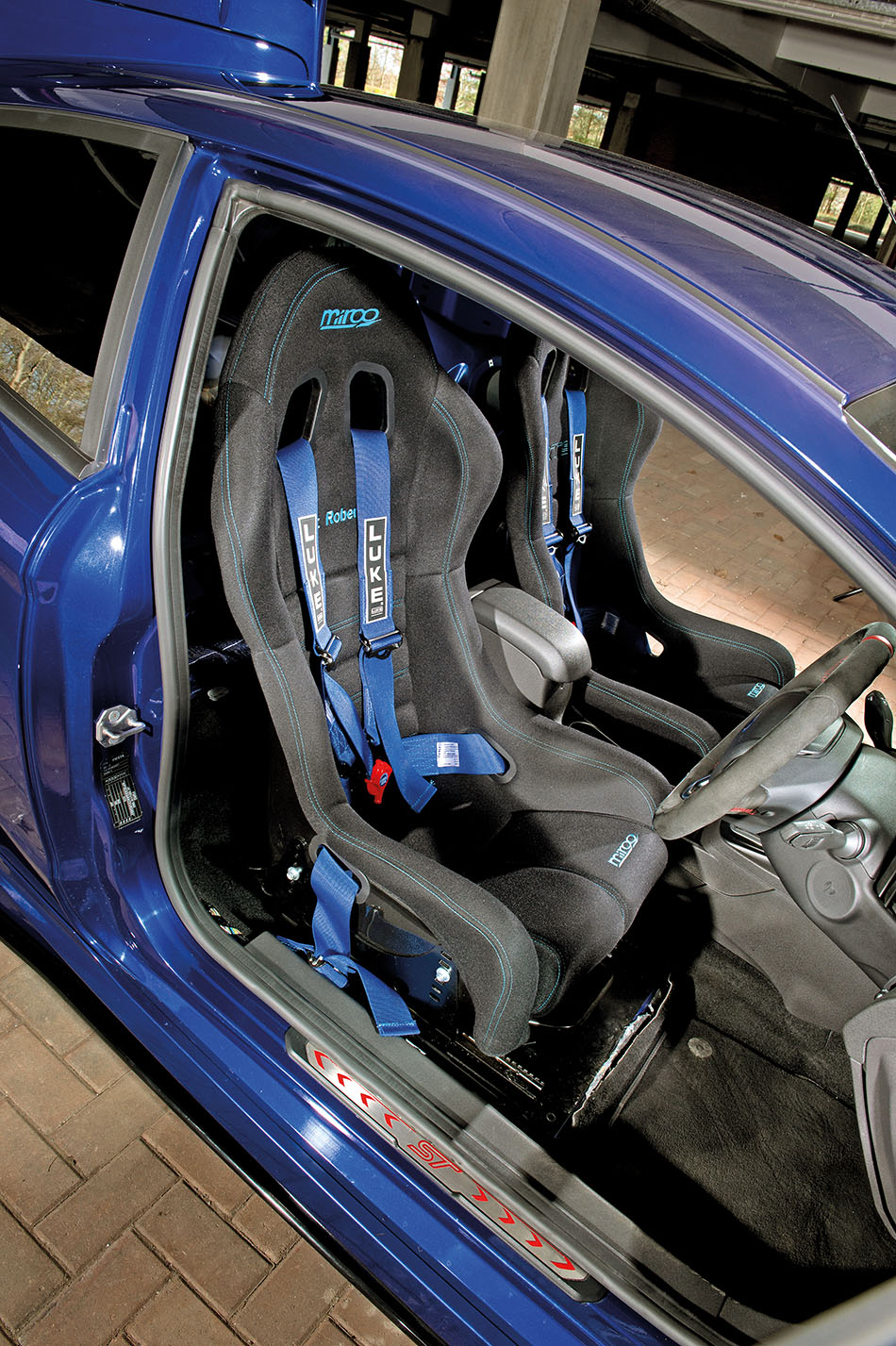
Bucket seats replace the heavy OE Recaros
Interior
The Mk7 Fiesta ST came well-specced from the factory for a car of its size and price point, and there’s not too much it really needs. It’s certainly a case of working with what you’ve already got rather than reinventing the wheel.
A steering wheel and gearknob upgrade is always a good starting point; not only do these tactile parts improve the way it physically feels to drive the car, it also means you’ll not have Ford’s version of Roland Rat staring back at you at all the time.
Subtle mods like the P3 Gauges unit that integrates neatly into the air vent and plugs into the OBD port to provide real-time data are a clever, OEM-plus upgrade. Retrimmed, painted or dipped interior pieces can also be used to good effect.
Bucket seats are always a welcome move for cars that spend a lot of time on track, and roll cages can add styling and performance gains simultaneously – just be aware that some insurance companies (especially the high-street brokers) tend not to like roll cages in road cars, so it’s worth checking if it will affect your premiums first.

Initial Engine Mods
Ford Fiesta ST Mk7 tuning is made easy thanks to its1596cc EcoBoost four-cylinder engine. Unlike other engines from the same series, the 1.6 can handle significant increases in power and torque without having to touch it – over 360bhp is achievable with just bolt-on upgrades.
Before we get to the good stuff though, the first thing to do is fit a new fuel pump bucket shim. The high-pressure pump runs off the camshaft, and the bucket shim is prone to wear. Excessive wear can result in low fuel pressure, which can cause all kinds of (potentially catastrophic) running issues. The good news is they are cheap and easy to replace, and many specialists now replace them as a matter of course at service intervals.
If your ST is in good health, you can start tuning to more than 300bhp without too much to worry about. The first step is usually a remap, ideally coupled with a performance air filter. This will give around 220-to-230bhp and typically costs between $/£300-600, but adding some hardware means an even more aggressive map can unlock even more potential.
After the initial remap, the next steps should concentrate on breathing and efficiency, so upgrades such as intercoolers and big boost pipe kits, exhaust systems with high-flow downpipes (sports cat to remain street legal, or de-cat for a cheaper, less restrictive option) and a suitably tweaked remap will see a strong 230-to-240bhp.
Induction
At this point, the stock Borg-Warner KP39 turbo runs out of puff. The good news is there are plenty of bolt-on options to choose from, and most specialist ST tuners now offer a hybrid or big turbo upgrade package. You’ll probably want to swap the original airbox to a proper induction kit if you haven’t done so already, and depending on the spec of intercooler you chose earlier you may need to level up here too (Stage 1 and 2 items don’t cope well with repeated runs at this higher level, so you’ll need a full-height Stage 3 item).
But it’s still all bolt-on stuff, and relatively affordable too; Collins Performance’s CP5 package (which includes CP5 software, ITG induction kit, Airtec Stage 3 intercooler, sports cat downpipe, Turbo Technics S280 turbo, and uprated Bosch fuel injectors) is currently available for under £3800, serves up between 340 and 350bhp, and is huge amounts of fun.
Similar offerings from all the big players in Ford ST tuning are available, with power ranging from 260 to 350bhp-plus, and prices starting under $/£3000 and running to over $/£5000.
Engine Strengthening
From there, you really should start to look at a full rebuild with stronger internals. We have seen cars pushing 400bhp on stock internals, but by the time you get to this level you’ll want to pull the engine apart to make upgrades in the search of power (such as porting the head, bigger cams, better oil control etc) so it makes sense to add forged rods and pistons at the same time.
We’ve just seen a collaborative effort from Laird Performance and SiTech Racing produce 459bhp at the wheels, which is well over 500bhp at the engine. There’s clearly more to come from this brilliant little engine in the future too.
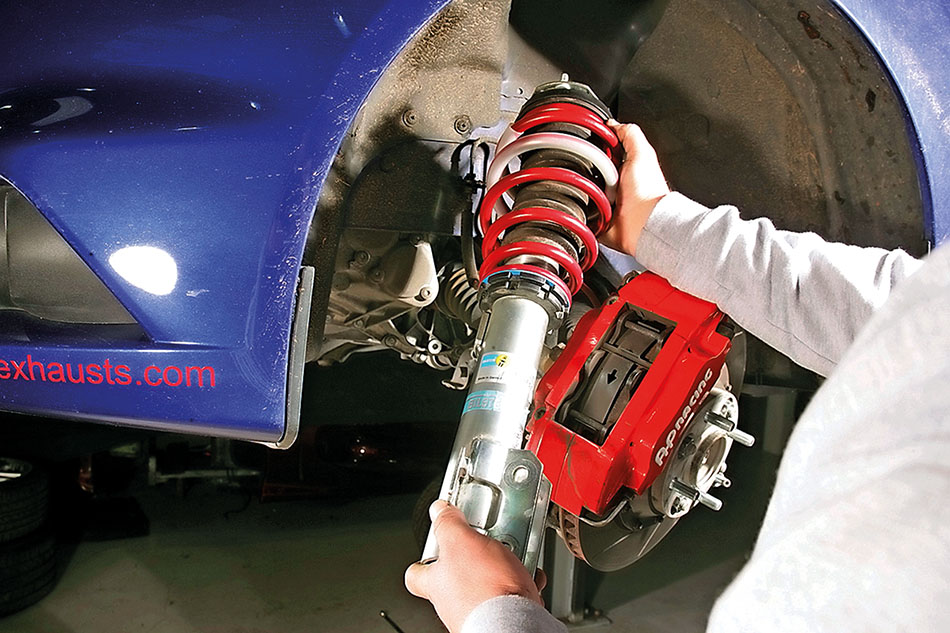
Coilovers can really transform the handling
Suspension
Famed for its superb handling even in factory spec, the Mk7 Fiesta ST has the perfect base to build a real performance monster from. The standard ride can be a bit choppy, and from an aesthetics standpoint sits far too high; a set of lowering springs (Eibach and H&R are the most common) will set you back $/£150-200 and offer improvements to the ride and handling, as well as giving a much meaner stance.
Couple these with some polyurethane bushes in key areas (the lower torque mount is a must for any hard-driven ST) and some stiffer anti-roll bars, and you’ll have a well sorted ST that’s compliant enough for daily use but firm enough to keep up with more exotic stuff when the road gets twisty.
Lowering springs and bushes will be enough for most road users, but more serious drivers may want the adjustment and stronger damping offered from a good-quality set of coilovers. Bilstein’s B14 ($791/£771), KW’s Variant 3 ($1910/£1500), and ST’s XTA ($1259/£1000) kits are generally preferred by most tuners, but you could blow the budget on a set of AST 5300s for $/£4500-5000 if you want full-on three-way adjustable units for a track or race car.
If you are going to that level, you’ll want to invest in some chassis bracing to ensure everything remains where it should.
Alternatively, if you’re building a show car there are options for air ride kits from the usual suspects too, with prices starting around $/£3000.
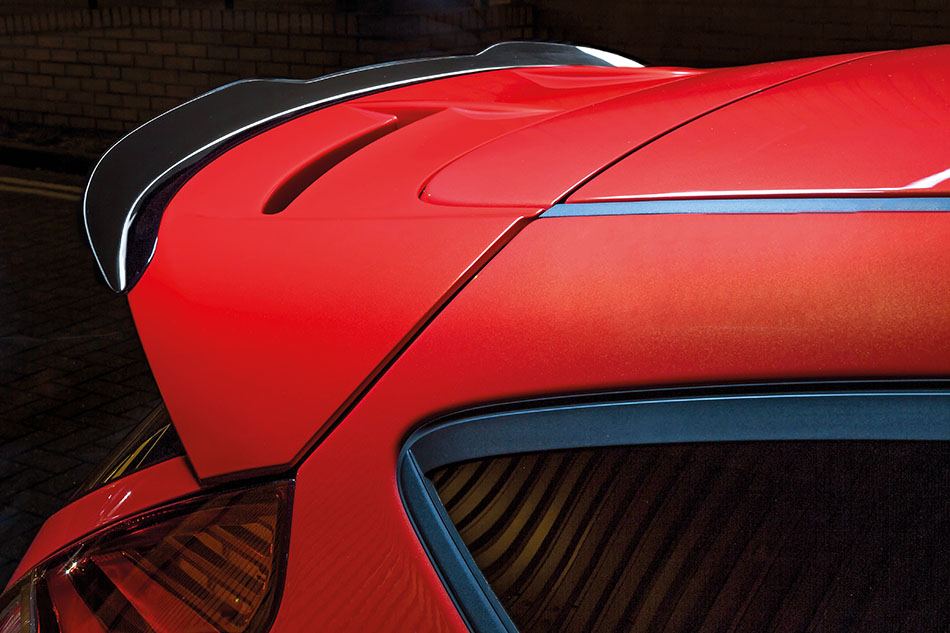
Subtle styling tweaks work well
Styling
Like all modern fast Fords, the Fiesta ST is a blank canvass upon which you can express your personality. Whether it’s perfecting the factory finish, showing the world your fetish for carbon fibre, or plastering the whole car with a lairy, in-your-face, custom wrap design, the Fiesta ST can do it.
Typically, subtle OEM-plus style upgrades to splitters, spoilers, and lowline kits are the starting point for most. Delta Styling offers a range of upgrades, including an RS-style rear spoiler and full lowline kit.
For the ultra-aggressive approach, you can opt to fit a wide-arch kit like the type Auto Specialists has fitted to its track/demo car. The company also now offers a range of Clubsport lightweight panels for track and race cars looking to shed some factory weight.
From show queen to hardcore racer, there’s plenty of options when it comes to styling an ST.
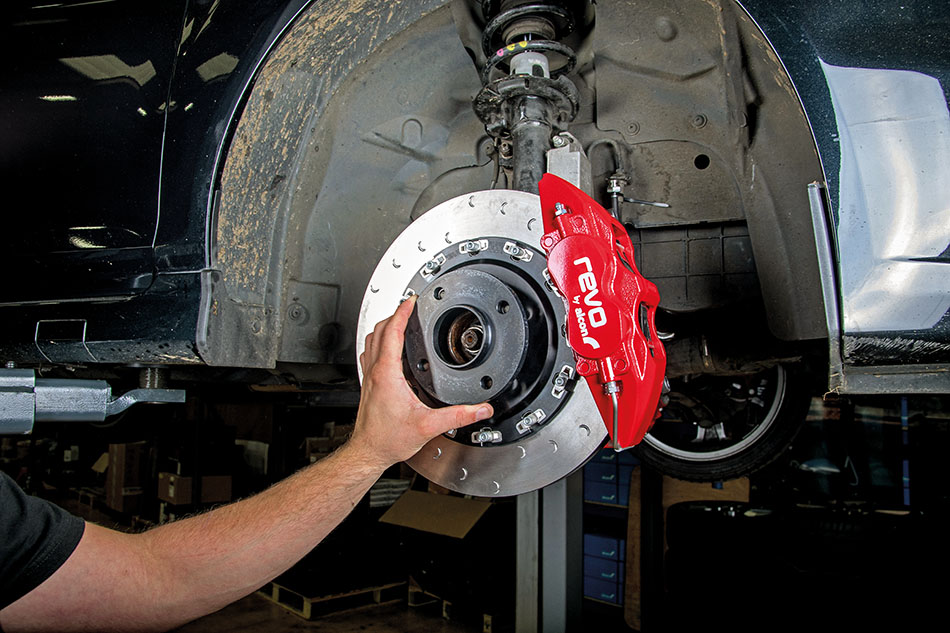
There are several big brake kits available
Brakes
If there’s one area of the Mk7 Fiesta ST that’s not able to cope with huge increases in power and performance, it’s the brakes. The OE stoppers are tiny by modern performance car standards at just 280mm diameter. Thankfully, some decent pads and uprated discs will cope fine with moderate performance upgrades, but for anything serious you’d want to bin the OE calipers and fit bigger discs too.
Big brake kits start at around 300mm and range through to 330mm; budget kits cost less than 1k, but the more popular 330mm/four-pot offerings from EBC and Revo cost between $/£1500-2500. Tarox also offers a six-pot caliper with 300mm disc kit starting at $1537/£1400. The Italian brake specialist also offers a big brake kit for the rear; this uses a spacer bracket to relocate the OE calipers so they will work with 295mm rear discs.
Running bigger discs and calipers often requires a minimum 10mm spacer to retain the OE 17in wheels. Also, it’s worth noting that many track drivers say the ST handles better on 16in wheels (and drag fans often drop to 15in wheels), so just be aware that bigger brakes might mean you have to make compromises elsewhere.
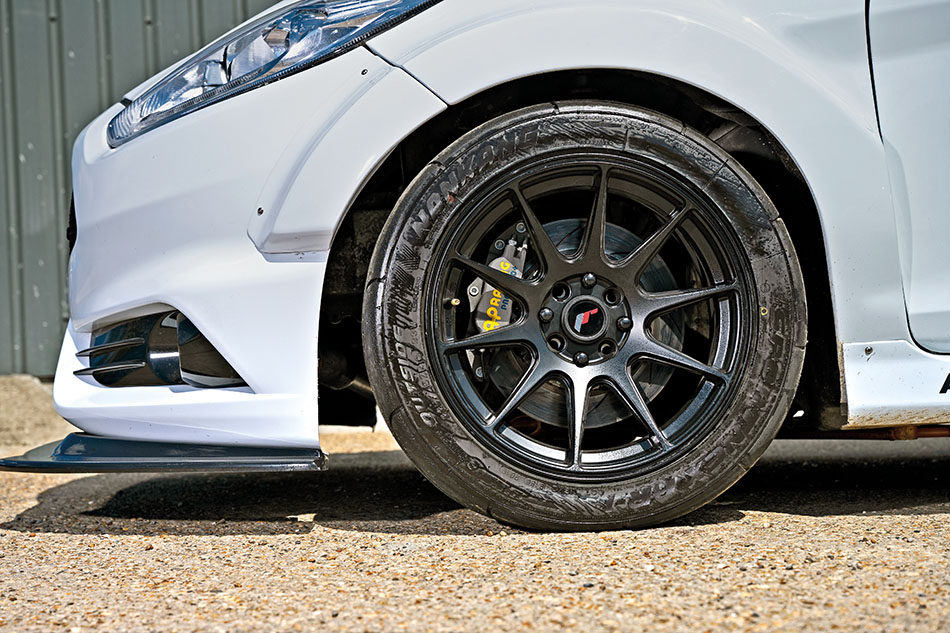
Wheels & Tires
There’s nothing wrong with the stock ST alloys from a styling point of view, but like all OE wheels they are heavy, and that affects performance. Fitting a set of lightweight alloys will reduce un-sprung mass by a considerable amount, helping improve all areas of the car’s handling, steering, braking and acceleration. A motorsport-influenced wheel will also have better brake clearance and mean you don’t need to run spacers when you fit a big brake kit.
Standard size is 7.0x17in with an offset of ET47.5, and there are several aftermarket wheels to choose from (stick with offsets from ET45 to ET35). Ideally, you’ll also want to stay with 205/40×17 tires, unless you’ve fitted wide arches to allow for wider wheel/tire combos without fouling on the bodywork.
Track car fans say that dropping to 16in wheels gives a noticeable improvement to the handling, especially when fitted with slightly taller-profile semi-slick tires, but just be aware of clearance issues over bigger brake kits.

Tuning Guide from Fast Ford magazine.

